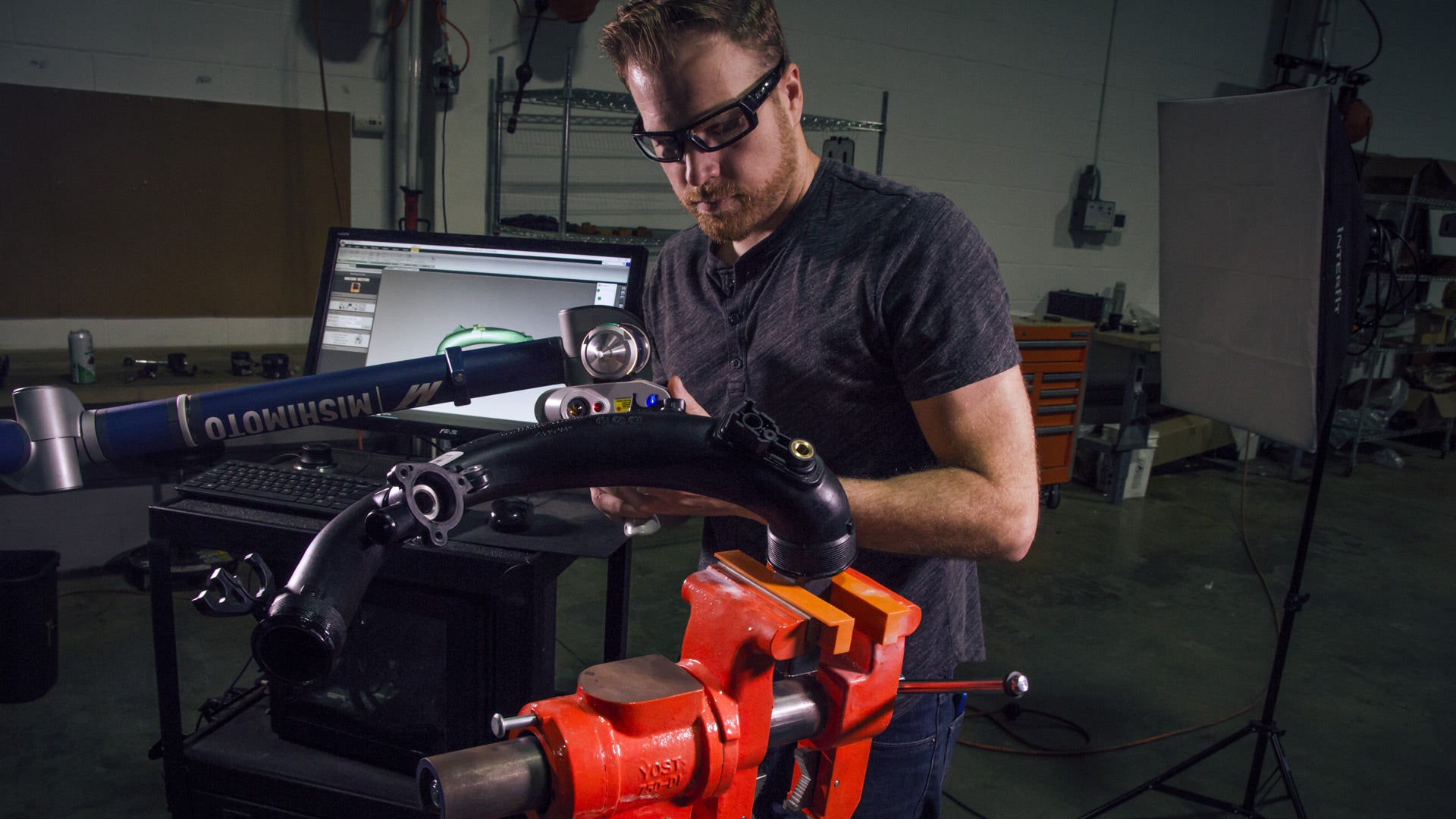
Rival Nature's Power - Intercooler Pipe R&D, Part 2: Measure Twice
No matter how powerful Mother Nature becomes, humans try to control, contain, or harness her. We hold back rivers with dams, suppress ocean waves with dunes, and leash the wind to power our sails and our cities. But even when we think we can control her power, we're often left in awe of Mother Nature's ability to break that control. Nature's strength and freedom are qualities we often admire and try to imitate. We mimic them in our art, our hobbies, and even the cars and trucks we drive.
At Mishimoto, we're not immune to the awe of Mother Nature. That's why we've been working to rival her power with the Jeep JL 2.0T Hurricane engine and our performance intercooler pipe.

Our first post focused on the stock intercooler pipe and all the components that make it unique to the Hurricane engine. We're going to be sticking with the stock components in this post, but this time we're breaking out some tech. We'll be taking exact measurements of the stock pipe and the surrounding components in the engine bay to make sure our pipe not only fits great, but also makes the most of the available space around it.
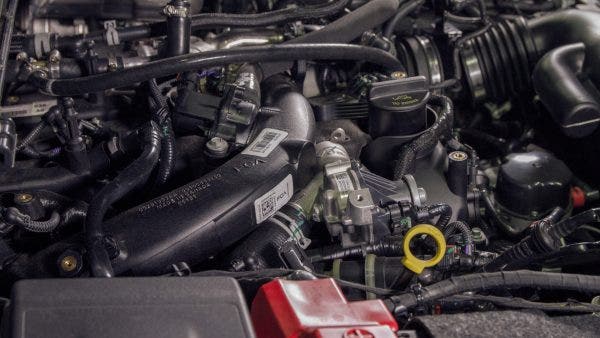
Removing the engine cover on the JL 2.0T reveals a frantic mess of plastic, hoses, sensors, wires, and pipes that make it difficult to identify anything under the hood, let alone gather precise measurements. But, if our intercooler has any shot at fitting in with all these disparate parts, precise measurements are exactly what we need. To measure the stock intercooler pipe in place and analyze the space we had to expand, Jason brought over our 3D laser scanner.
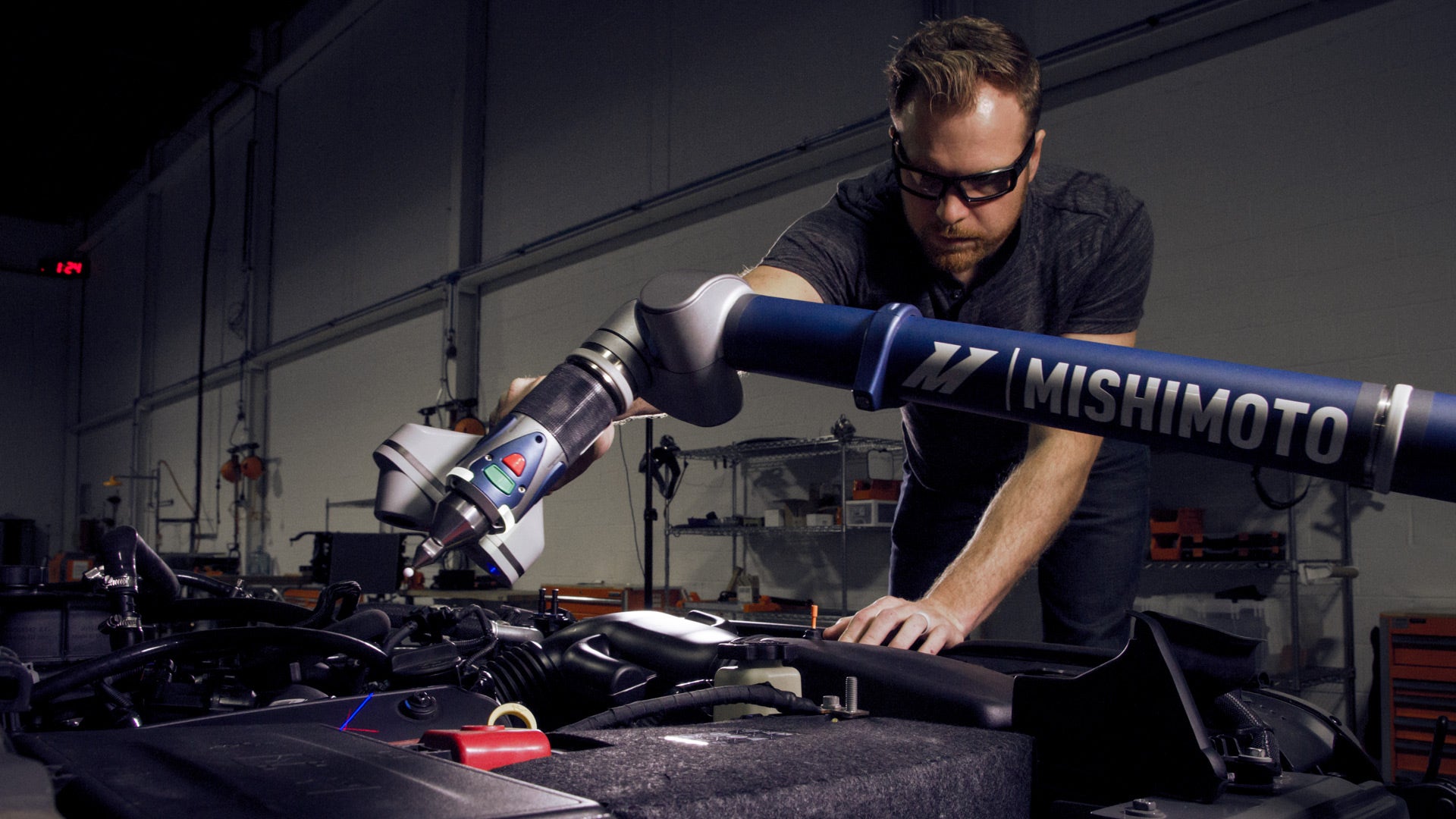
Our Faro Design ScanArm 3D scanner renders the engine bay with 2,000 points of measurement, 28 times a second. The result is a 3D model of the engine bay so precise that you can read printed text on a sticker. With this model, we can define what is known as the product's "envelope," or the space that the intercooler pipe must fit into. The 3D model also lets us design a product in 3D space, test fit it, and adjust as needed instead of wasting time and our customers' money on sample after sample.
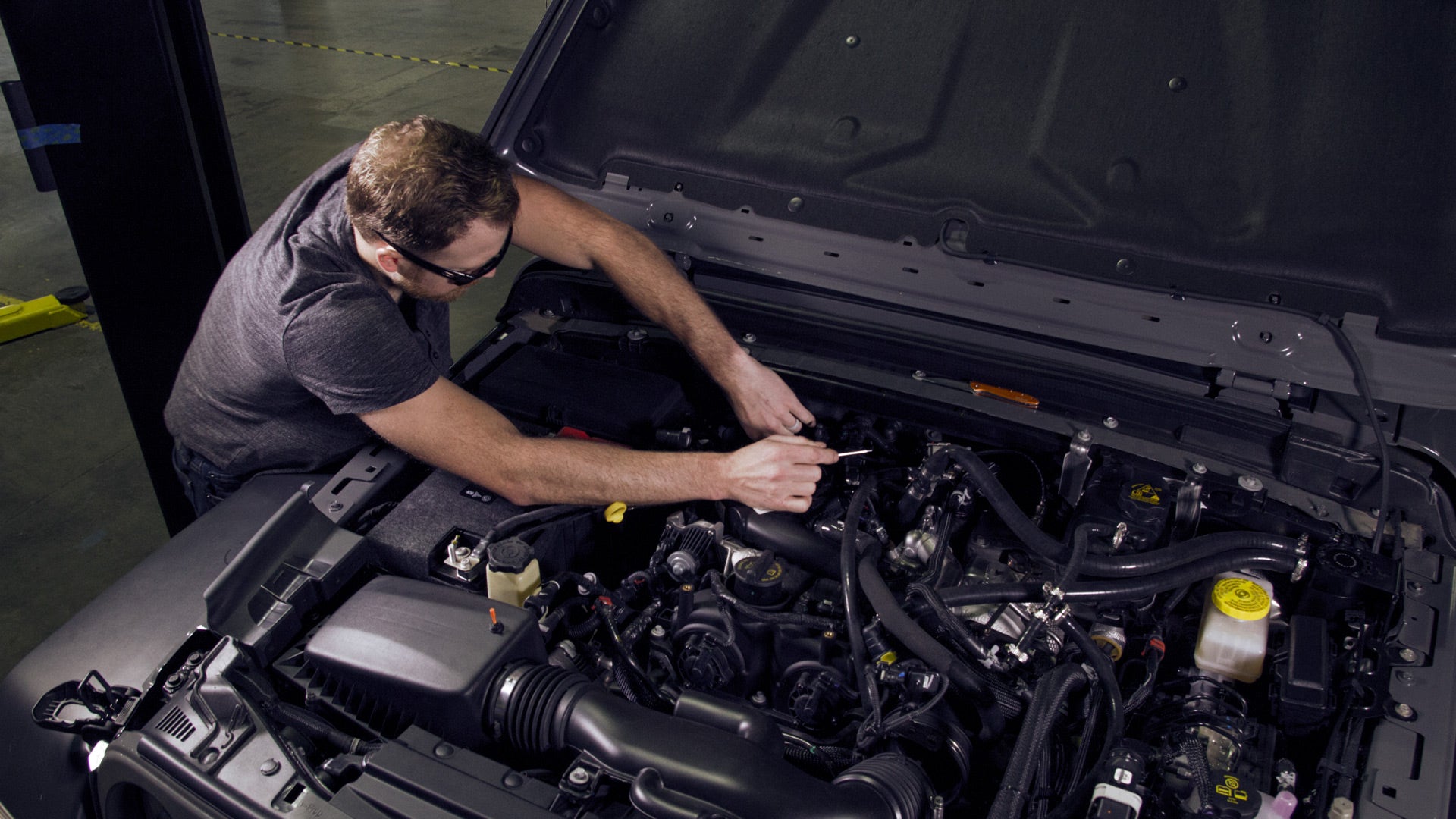
After scanning the engine and intercooler pipe together, Jason removed the intercooler pipe to get a little closer look at its details. Mounting the intercooler pipe in a vise gave Jason a 360° view of the pipe and access to every nook and cranny on all sides. Jason also removed the stock bypass valve from the pipe so we could get a better look at the inner workings of the valve and scan the critical sealing faces.
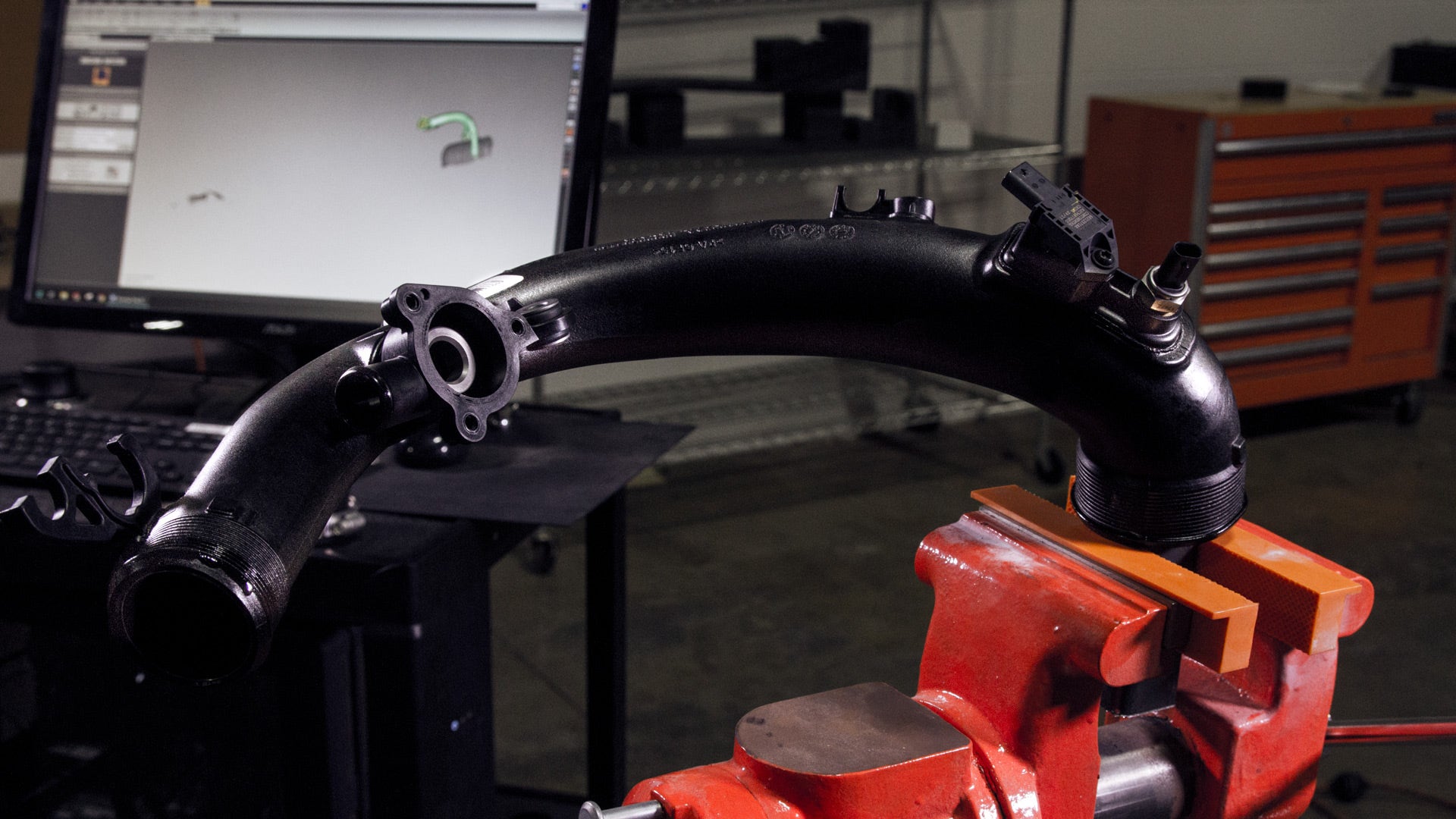
The model of the stock intercooler pipe tells us exactly where the bypass valve and sensors are located, and where we can improve the flow of the pipe, but we still needed one more scan to complete our suite of measurements. Jason returned to the JL and scanned the engine one more time. With the intercooler pipe out of the way, Jason could see all the dips and bends our pipe would have to contend with. The limited room on all sides of the intercooler pipe means we can't just make a cylinder and connect the turbo to the intake manifold; our part will have to conform to the engine and still flow better than stock.
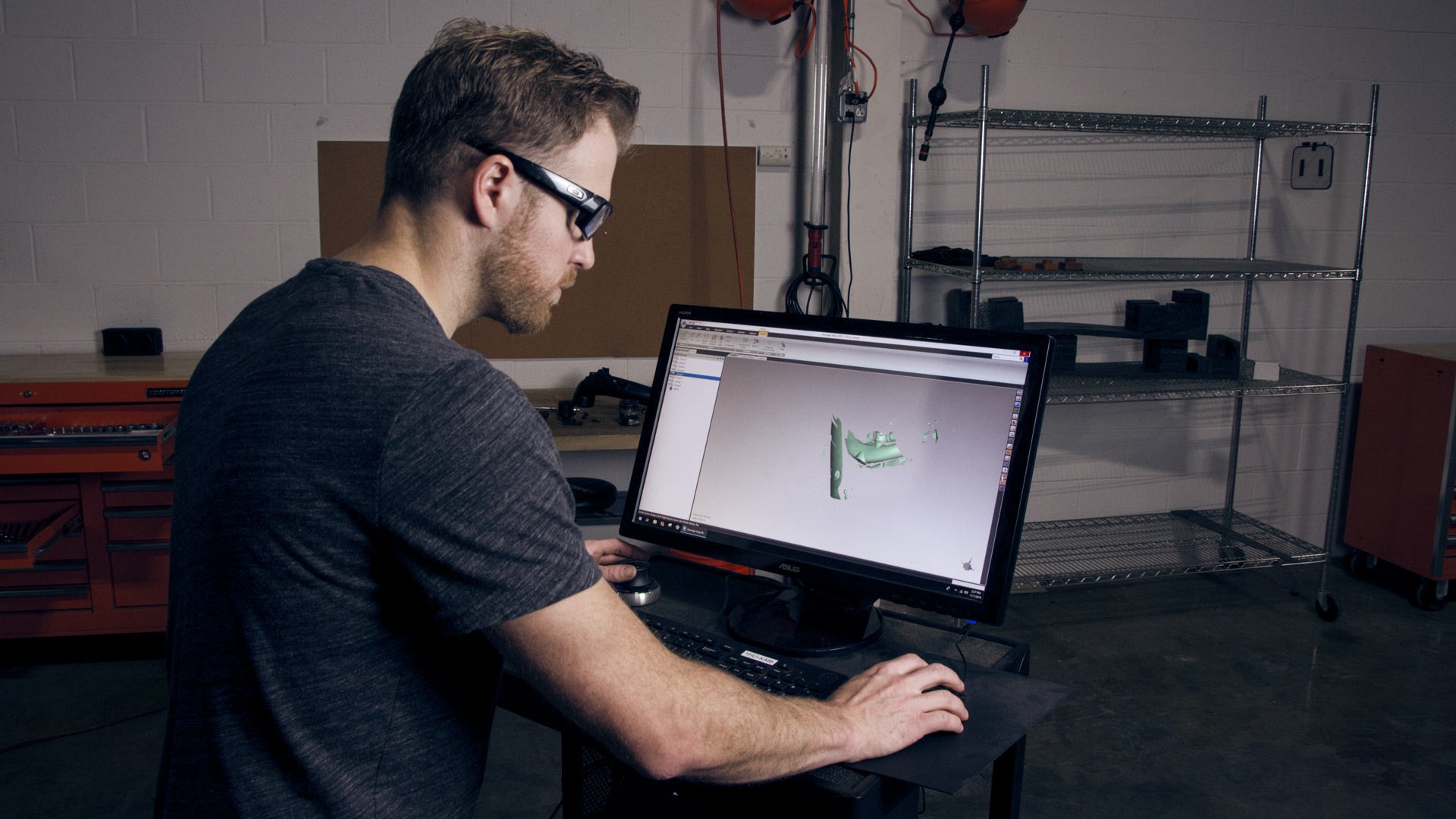
The scan of the engine without the intercooler pipe completed our 3D modeling process. Jason buttoned up our JL and began working on a design to help the turbo breathe out, and the Hurricane breathe in, much easier. Fitting a better flowing pipe in such a small space will be tough, but we have some tricks up our sleeves that should help.
Keep an eye out for the next post to see Jason's design come to life and, as always, let us know what you think.




